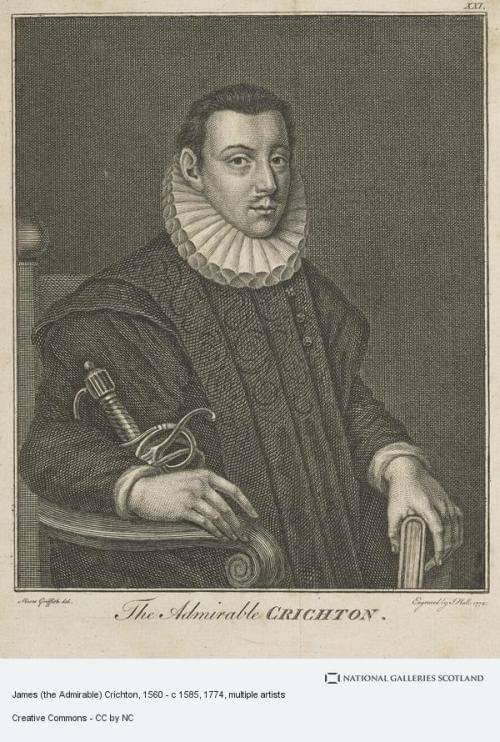#Gonzaga University
Text



Gonzaga Volleyball
#Gonzaga University#Gonzaga Bulldogs#college volleyball#volleyball girls#athlete#female athletes#college athlete#college girl#bikini#athletes in bikinis
117 notes
·
View notes
Text
Farm to neighborhood to table: City farm project spearheads community
20 notes
·
View notes
Note
yes❤️
guys i’m so sorry chet holmgren and jalen suggs are my little babies like i’m not tolerating any slander that doesn’t come from me
like i’ve been watching both of them since gonzaga idc
3 notes
·
View notes
Photo

THE DESCRIPTION OF SAINT ALOYSIUS GONZAGA
The Patron of Youth, Jesuit Scholastics, AIDS Patients and AIDS Caregivers
Feast Day: June 21
"There is no surer sign that one is of the number of the chosen than to see that he fears God, while at the same time being tried with tribulation and desolation in this world."
The patron of the youth and those who suffered from AIDS, was born near Castiglione delle Stiviere, Duchy of Mantua, Holy Roman Empire (in Lombardy, Italy), into the noble Gonzaga family on March 9, 1568.
In order to satisfy the ambitions of his father, Ferrante de Gonzaga, the Marquis of Castiglione, the first-born Aloysius was trained in the art of war, and was obliged to attend military parades and royal banquets. He was so disappointed by the vices of the nobility that he developed an intense desire for religious life. He fasted three times a week on bread and water, scourged himself with a stick, and rose at midnight to pray on the stone floor of his room. In order to safeguard his chastity, he would keep his eyes persistently downcast in the presence of women.
After reading a book describing the experiences of the Jesuit missionaries in India, he determined to become one of them. In November of 1585, not withstanding the furious opposition of his father, Aloysius renounced his inheritance, which was confirmed by the Holy Roman Emperor. He went to Rome and because of his noble birth, he gained an audience with Pope Sixtus V. Following a brief stay at the Palazzo Aragona Gonzaga, the Roman home of his cousin, Cardinal Scipione Gonzaga, he entered the Society of Jesus on November 25, 1585.
Six weeks later, Ferrante died in peace with the Lord. From the moment his son had left him, he had completely reformed his life. Aloysius was a model of perfection. Aware of the dangers of pride, he requested to serve in the kitchen and to perform the most humble duties.
In 1591, while serving the sick during the plague, Aloysius contracted the disease, grew ill and was bedridden by March 3, 1591, a few days before his 23rd birthday. And after three months of suffering, Aloysius died at the age of 23, on June 21, 1591 - the Octave of Corpus Christi.
In the last letter to his mother, Donna Marta Tana di Santena, he wrote:
'Take care not to insult God's loving kindness, by mourning for a dead one who is living face to face with God. Our parting will not be for long; we shall see each other in heaven.'
Aloysius was beatified by Pope Paul V on October 19, 1605 and is canonized a saint on New Year's Eve 1726 by Pope Benedict XIII. His major shrine can be found in Rome. In 1729, Pope Benedict XIII declared Aloysius Gonzaga to be the patron saint of young students, and in 1926, he was named patron of all Christian youth by Pope Pius XI.
#random stuff#catholic#catholic saints#aloysius gonzaga#san luis gonzaga#society of jesus#jesuits#AIDS#gonzaga university
5 notes
·
View notes
Text
list of best Universities in Washington State
Washington State is home to many universities and colleges, offering students a wide range of educational opportunities. In this blog post, we’ll provide an overview of some of the top universities in the state.
Antioch University Seattle: Founded in 1975, Antioch University Seattle is a non-profit private higher education institution located in the urban setting of the large city of Seattle…
#Antioch University Seattle#Bastyr University#Bellevue College#Central Washington University#Centralia College#City University of Seattle#Columbia Basin College#Cornish College of the Arts#Eastern Washington University#Gonzaga University#Heritage University#Lake Washington Institute of Technology#list of best Universities in Washington State#Northwest University#Pacific Lutheran University#project topics#Saint Martin&039;s University#Seattle Central College Seattle#Seattle Pacific University#Seattle University#The Evergreen State College#University of Puget Sound#university of washington#Walla Walla University#Washington State University#Western Washington University Whitman College Walla Walla#Whitworth University
0 notes
Text
Gonzaga University: A Testament to Excellence - The Reviews Writing
Gonzaga University stands as a beacon of academic brilliance, shaping future leaders with its innovative programs. Students laud its vibrant community, supportive faculty, and top-tier education. The Reviews Writing emphasizes Gonzaga's commitment to excellence, inspiring countless success stories and making it a premier choice for higher education.

0 notes
Text




#14 Gonzaga Bulldogs at Portland Pilots
Saturday, January 28, 2023
Chiles Center, Portland, OR
#Gonzaga University#Gonzaga#GU#Gonzaga Bulldogs#Bulldogs#Zags#University of Portland#Portland#UP#Portland Pilots#Pilots#WCC#West Coast Conference#NCAA#Basketball
0 notes
Text










MCU actresses Karen Gillan, Pom Klementieff, Elizabeth Debicki, Daniela Melchior, Meng'er Zhang, Ginger Gonzaga, Iman Vellani, Xochitl Gomez, Dominique Thorne, Ariana Greenblatt, Linda Cardellini and Judy Greer attend Marvel Studios’ “Guardians of the Galaxy Volume 3” World Premiere at the Dolby Theatre on April 27, 2023, in Hollywood, California.
#Guardians of the Galaxy Vol 3#GOTG 3#guardiansofthegalaxy3edit#gotg3edit#marveledit#mcuedit#marvelwomenedit#marvelladiesedit#MCU#Marvel Cinematic Universe#Marvel#Karen Gillan#Pom Klementieff#Elizabeth Debicki#Daniela Melchior#Meng'er Zhang#Ginger Gonzaga#Iman Vellani#Xochitl Gomez#Dominique Thorne#Ariana Greenblatt#Linda Cardellini#Judy Greer#Marvel Women#MCU Women
228 notes
·
View notes
Text


















Tatiana Maslany + She-Hulk Bloopers
#Tatiana Maslany#She Hulk#She-Hulk#Attorney at Law#Jennifer Walters#Behind the Scenes#Bloopers#Mark Ruffalo#Bruce Banner#Hulk#Ginger Gonzaga#Nikki Ramos#Josh Segarra#Augustus Pugliese#Pug#Marvel#Marvel Cinematic Universe#MCU#Marvel Cast#MCU Cast#Marvel Women#Women of Marvel#Orphan Black#Clone Club#my gifs
353 notes
·
View notes
Text
May 17, 2024
Happy 41 Birthday to Ginger Gonzaga.
#Ginger Gonzaga#Happy Birthday#Nikki Ramos#She-Hulk Attorney at Law#Marvel Cinematic Universe#MCU#Marvel#May#2024
0 notes
Text
Gonzaga Students Hold Rally, Calling for Ceasefire in Israel-Hamas War
1 note
·
View note
Text

Heat Capacity and Specific Heats
Heat capacity in thermodynamics is defined as the amount of heat that is needed to change the temperature of an object by a defined temperature interval. Mathematically, it is most often represented by the capital letter C and the formula for it is C equals q (heat) over the defined change in temperature (ΔT). The units for heat capacity are energy per temperature (in SI base units, J/K). Heat capacity is an extensive property and depends directly on how much of a substance there is.
The intensive version of heat capacity, which is an intrinsic property of a material and does not depend on the amount of it, is known as specific heat capacity. As with other specific values, specific heat capacity is heat capacity divided by mass. It is often represented by the lowercase letter c.
Common subscripts for both heat capacity and specific heat capacity are P and V, to indicate either heat capacity at a constant pressure (P) or constant volume (V).
Sources/Further Reading: (Image source - Gonzaga University) (NASA) (Khan Academy) (LibreTexts) (Wikipedia)
46 notes
·
View notes
Note
Wait would you mind telling me where did Ines and Amari go? Im pretty new to these hehe :)
ines and amari entered the transfer portal after the 23-24 szn. which means they don’t play for uconn anymore!! Ines is transferring to Gonzaga University and Amari is transferring to Maryland!!
#wbb#wnba#uconn wbb#uconn#amari deberry#ines bettencourt#gonzaga wbb#maryland wbb#uconn huskies#wcbb
21 notes
·
View notes
Text


On 19th August 1560 the Scottish scholar and poet, James Crichton, was born.
Soldier, scholar, poet and athlete, he was a graduate of St Andrews University and a tutor of King James VI. James Crichton, known as the Admirable Crichton, was a Scottish polymath, a latin term that translates to “universal man”, basically he was good at everything!
Crichton wasnoted for his extraordinary accomplishments in languages, the arts, and sciences. One of the most gifted individuals of the 16th century, James Crichton of Clunie Perthshire, was the son of Robert Crichton of Eliok, Lord Advocate of Scotland, and Elizabeth Stewart, from whose line James could claim Royal descent.
At the age of eight Crichton’s eloquence in his native vernacular was compared with that of Demosthenes and Cicero. By fifteen he knew “perfectly” Latin, Greek, Hebrew, Arabic, and Syriac; and commanded native conversational fluency in Spanish, French, Italian, “Dutch”, Flemish, and, oh, “Sclavonian”, don’t worry I looked it up for us, it’s basically Slovenian.
That was the mere beginning of Crichton’s admirableness. He was also a champion athlete, a horseman, a fencer, a dancer, a singer of rare voice, and the master of most known wind and string instruments. His St. Andrews professor, Rutherford, a noted commentator, judged him to be one of the leading philosophers of the era.
After sucking all the available education to him in Scotland, it was only natural he should start on mainland Europe, he studied in France at the College of Navarre at the University of Paris. Here the young Scotsman cut a broad swath, though according to his jealous fellows his arenas of greatest activity were the tavernia’s and the whorehouses, rather than the lecture hall. Young Crichton did like the ladies, who in turn found him most–admirable.
He may have been liked by the ladies, but nobody likes a big heid, and that is how Crichton must have come across to many, nowadays he would have been one of the Chasers, or an Egghead on our TV screens, but back in the 16th century there were no such outlets for Crichton to show his big heid off, so he had posters printed up declaring that on a day six weeks hence, at nine in the morning, in the main hall of the College of Navarre, he intended to present himself to dispute with all comers all questions put to him regarding any subject. He had these put up on all the appropriate notice boards and church doors, before disappearing into the red light district to prepare himself for the contest. His adversaries had to quit laughing when on the appointed day Crichton appeared as advertised and bested the greatest local experts in grammar, mathematics, geometry, music, astronomy, logic, and theology.
The Crichton Show, having conquered Paris, moved next to the Italian peninsula. The young Scot performed memorable feats of academic disputation first in Rome and then in Venice. There he became fast friends with the famous scholar-printer Aldus Munitius, who is a credible witness to some of his more amazing intellectual performances. One of his ways of showing off was giving off the cuff instances of Comedic verse, a sort of Stand Up routine, but with that Crichton twist, the odes he told were in Latin!
Tradition has it on the street in Mantua one night he was accosted by four swordsmen, with superb sword play Crichton disarmed them all and forced them to show their faces. One of them, their leader indeed, turned out to be one of his pupils and prodigy, Vincenzo Gonzaga who was the son of The Duke of Mantua. Crichton was in the Duke’s employ and the youngster was jealous of the Scot, Crichton was also romantically linked to Vicenzo’s ex mistress. On seeing Vincenzo, Crichton instantly dropped to one knee and presented his sword, hilt first, to the prince, his master’s son. Vincenzo took the blade and with it stabbed Crichton cruelly through the heart, killing him instantly. James Crichton of Cluny was then in his twenty-second year.
There have been many accounts of Crichton in literature through the years since, mostly fictional but with hints of the story, the most famous is arguably the J M Barrie play, but the title of the play is the only semblance to the story of the Scottish Polymath.
11 notes
·
View notes
Text

Parnassus (also known as Mars and Venus, 1497 - Andrea Mantegna (1431–1506)
The Parnassus was the first picture painted by Mantegna for Isabella d'Este's studiolo (cabinet) in the Ducal Palace of Mantua. The shipping of the paint used by Mantegna for the work is documented in 1497; there is also a letter to Isabella (who was at Ferrara) informing her that once back she would find the work completed.
The theme was suggested by the court poet Paride da Ceresara. After Mantegna's death in 1506, the work was partially repainted to update it to the oil technique which had become predominant. The intervention was due perhaps to Lorenzo Leonbruno, and regarded the heads of the Muses, of Apollo, Venus and the landscape.
Together with the other paintings in the studiolo, it was given to Cardinal Richelieu by Duke Charles I of Mantua in 1627, entering the royal collections with Louis XIV of France. Later it became part of the Louvre Museum.
The traditional interpretation of the work is based on a late 15th-century poem by Battista Fiera, which identified it as a representation of Mount Parnassus, culminating in the allegory of Isabella as Venus and Francesco II Gonzaga as Mars.
The two gods are shown on a natural arch of rocks in front a symbolic bed; in the background the vegetation has many fruits in the right part (the male one) and only one in the left (female) part, symbolizing the fecundation. The posture of Venus derives from the ancient sculpture. They are accompanied by Anteros (the heavenly love), opposed to the carnal one. The latter is still holding the arch, and has a blowpipe which aims at the genitals of Vulcan, Venus' husband, portrayed in his workshop in a grotto. Behind him is the grape, perhaps a symbol of the drunk's intemperance.

Detail of Vulcan.
In a clearing under the arch is Apollo playing a lyre. Nine Muses are dancing, in an allegory of universal harmony. The touch of Pegasus's hoof (right) can generate the spring which fed the falls of Mount Helicon, which can be seen in the background. The Muses danced traditionally in wood of this mount, and thus the traditional naming of Mount Parnassus is wrong.

Detail of Pegasus and Mercury.
Near Pegasus is Mercury, with his traditional winged hat, caduceus (the winged staff with entwined snakes), and messenger shoes. He is present to protect the two adulterers.
#parnassus#mars and venus#anteros#mercury#venus#vulcan#roman mythology#andrea mantegna#italian artist#italian renaissance#15th century art#tempera and gold on canvas#mythological art#mythological painting#tempera painting#pegasus#greek mythology#musée du louvre#allegorical art#allegorical painting#apollo#the nine muses#mount helicon#art details
11 notes
·
View notes
